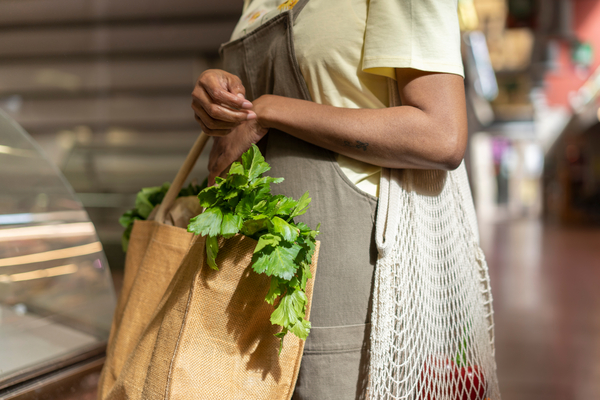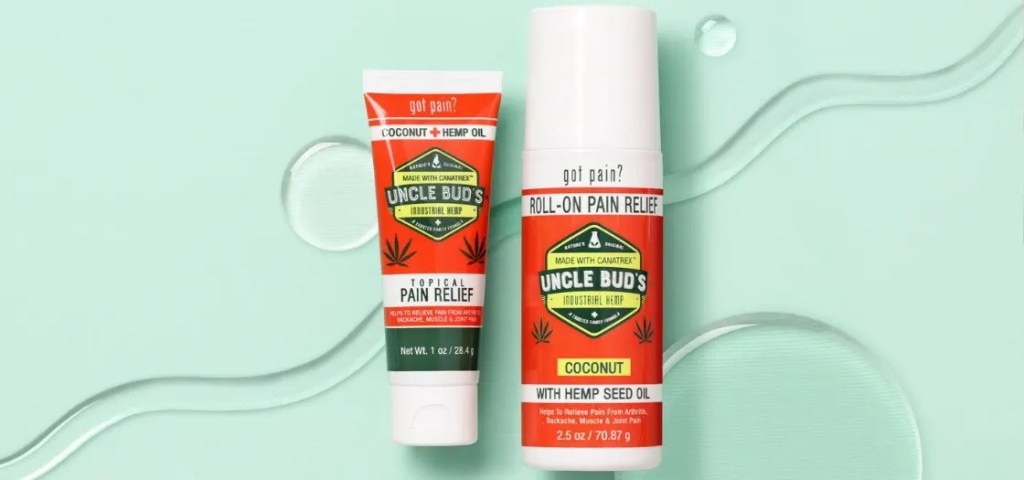The State of Fresh in 2024
For years, there has been a growing trend toward fresh, locally sourced, and organic foods. As consumers became more aware of the impact of their food choices on their health and the environment, they took a more critical eye to their shopping. The pandemic only served to increase the pace of this trend as health took center stage for millions of Americans. Though we’re on the other side of the pandemic, this trend will likely continue to grow through 2024 and beyond.
Advancements in food preservation technologies are also making an impact. High-pressure processing and modified atmosphere packaging have enabled fresh foods to have a longer shelf life while maintaining their nutritional quality and freshness. These technologies may continue to improve and become more widespread, allowing for even greater access to fresh foods.
However, inflation, climate change, and factors may continue to impact the availability and quality of fresh foods. It’s possible that there may be shifts in the types of fresh foods that are available or that certain foods may become too expensive or scarce for consumers.
Overall, the state of fresh in 2024 will likely depend on a variety of fresh food trends including shifting consumer preferences, inflationary pressures, and shifts within subcategories.
5 Trends Impacting Fresh Food
Since the fresh market is made up of so many diverse product types, it can be hard to know what trends are important to your brand. But a few major trends are impacting the fresh category that all brands should keep their eyes on.
With that in mind, here are 5 fresh food trends you need to be aware of as you continue building your growth plan:
1. Inflation Still Matters
American consumers have been dealing with the impact of inflation since April 2020. U.S. inflation growth is forecasted to slow in 2024 and beyond, but decelerated growth is not the same as decline. After peaking in January ’23, U.S. FMCG prices continue to rise, just at slower rates. The rate of food inflation is slowing but still high at 6.3%, compared to only 5.8% in non-food departments.1 Very few CPG departments are immune to rising prices as inflation continues to hit all areas of the store, primarily driven by food departments – Dry Grocery +10%, Bakery +8%, Dairy +5%, and Frozen +7% reported the top four increases for food.2
This will likely change throughout the year as 46% of American consumers say they are optimistic their financial situation will be better by the end of 2024.3 But this doesn’t mean every fresh food brand will see major growth. Increased prices mean smaller basket sizes and more consumers seeking to eliminate products they deem non-essential. As a fresh food brand, you need to understand how to balance promotional sales, consumer needs, and margins to build long-term growth.
2. Consumers want Sustainability
One thing is clear, consumers care about sustainability, and they’re backing it up with their wallets. In fact, 92% of consumers say that sustainability is important when choosing a brand today.4 In the grocery store, products with claims like “organic” are more popular than ever, while new and emerging claims around regenerative agriculture, carbon footprint, water footprint, and responsibly sourced are emerging and growing rapidly.
This trend can be very beneficial for fresh food brands, especially those that source their products locally, sustainably, or responsibly. Still, you need to do a good job of marketing your products around these topics if you want consumers to find you. Make sure to leverage sustainability attributes on your packaging or in the product descriptions to highlight your alignment with sustainable practices and meet shifting consumer needs.

Consumer Outlook 2024
6 consumer sentiment-driven strategies to power growth and capture spending
Consumers have been tested in more ways than one over the past year—and beyond. Pockets of growth have emerged as consumers pivot spending behaviors to survive and thrive. Dive into a high-level view of this year’s global report.
3. Health & Wellness Matter
According to NIQ’s 2023 Shopper Health Study, American consumers are facing a slew of health concerns that are shaping their shopping needs. 33% of U.S. adults are now considered obese, but they’re combatting it in new ways.5 Products claiming to support metabolism saw 12% growth, while weight management supplements dropped -13%.5 Even more interesting, households reporting obesity and taking weight loss drugs grew 2x in the past year.5 This, paired with the renewed focus on health that came from the COVID pandemic, has revitalized the market for food as a source of wellness.
Luckily, many brands and retailers are acting to support this renewed focus on health. Many convenience stores and drugstores are increasing the amount of fresh food for sale. Grocery retailers are launching education programs, and manufacturers are working to reduce sodium and added sugars. Fresh food brands can particularly benefit from this trend, especially when aligned to plant-based diets or when their offerings are “organic,” one of the most desired product attributes.
4. Online Growth is Slow
Though 86% of US CPG dollar sales are represented by “omnichannel shoppers,” fresh food and perishables have not made much progress in gaining traction online. For example, the total U.S. fruit market saw more than $49 billion in sales in the past year, but only $3.9 billion of that occurred online.6 This shows that consumers are still choosing to shop for fresh products in-store or through click-and-collect. This may be due to convenience or a general wariness for online shopping in the fresh food space.
Still, NIQ’s omni data also shows that more food dollars are being spent in-store than online. Notably, within the U.S., 21% of online CPG food is being purchased on Amazon.com. If online is an avenue you want to build on, you’ll need to understand the ways consumers shop online and the difficulties that you may need to overcome. Shipping issues for fresh food are less common than they used to be, but many consumers are still wary. Education is key to building an online foothold for many fresh brands.
*Source: NIQ Total US xAOC, last 52 Wks ending 4/1/23
5. Big-Box and Value Retailers Gaining
Alongside other inflation-driven trends is the rapid adoption of value and bulk shopping. To help stretch their dollars, shoppers are turning to stores with lower prices. Value retailers’ sales jumped 6% in 2023, capturing 42.8% of CPG sales, up 6% over 2022.7 This makes sense as 82% of U.S. Consumers say they are motivated to seek lower prices, and 56% say they’re switching stores to save.3 They’re also purchasing products in larger quantities to save more with each transaction and hope to avoid price increases.
One of the biggest drivers of these gains comes in the form of private label products. U.S. private label sales were up 8.7% in 2023 as consumers sought value for money.8 They also captured 19.4% of the consumer wallet.9 While private label sales are less common in fresh, that may not always be the norm. As retailers see the opportunity to grow, they will continue to enter new markets and increase competition. As a fresh food brand, you need to be aware of these shifts and align your pricing and promotion strategies accordingly. Competing with private label growth is a challenge, but one many brands are now having to face.
How to Leverage Fresh Food Trends
Once you have a better view of the different trends impacting your brand and growth, you need to know how to act on this information to meet evolving shopper needs. Most importantly, you need to understand the pressures your target consumers are facing. With rising costs in nearly every aspect of their life, they’re stretching their wallets more than ever. This doesn’t mean you need to drop your prices, but you do need to be aware of how consumers are shifting to save. This will let you better align your messaging, promotions, and general positioning to meet shifting demand.
Additionally, leveraging wellness and sustainability trends will be even more valuable going forward. Health continues to be increasingly important to all consumers. For those consumers who are more proactive with their health, the top reasons are to live a longer, healthier life, avoid preventable diseases, and protect against ailments. Speaking directly about how your products relate to these needs can be a major boon for your future growth.

Get the Full View and Keep Your Sales Fresh
Leveraging the most important fresh food trends requires understanding customer behaviors, sales trends, growth opportunities, and future demand. Which is a lot to ask if you don’t have access to accurate data and valuable insights. The experts at NIQ are here to help.
No matter your size or state of growth, NIQ provides the Full View of the market at a price that fits your budget. For emerging brands, Byzzer™ by NielsenIQ provides access to the essential data they need to successfully react to these shifting tides and build growth strategies.
Talk to our experts about new options custom-built for emerging and rising brands alike.
Don’t miss out on the market’s best data and expert insights to help you keep brand growth strong in 2024 and beyond!
Sources:
1 NIQ, Total US xAOC, monthly periods ending December 30, 2023 — * NIQ Global Inflation Tracker – November 2023
2 NIQ, Total US xAOC, 52 weeks ending December 30, 2023
3 NIQ Consumer Outlook 2024, U.S.
4 NIQ Report – The Green Divide
5 NIQ Webinar – What’s Next in Wellness 2024
6 NIQ Total US Omnisales, last 52 Wks ending 2/24/24
7 NIQ, Total U.S, xAOC, Latest 52 weeks December 30, 2023. Value Retailers (Mass+Club+Discount+Dollar)
8 NIQ Retail measurement services, Latest year ended Q3 2023 vs. year-ago, via Quarter By Numbers, Private label report
9 NIQ, Total US xAOC, – Private Label Dollar Sales: 5 weeks ending December 30, 2023, PL: Private Label NB: National Brands




